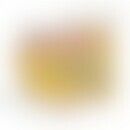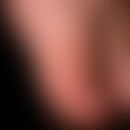Synonym(s)
DefinitionThis section has been translated automatically.
Cnidarian larvae dermatitis (not to be confused with the so-called (freshwater) bathing dermatitis = swimmer`s itch), which occurs after swimming in the sea on the coasts of Florida, the Bahamas, the Philippines, Thailand and Brazil. The disease, which is endemic and seasonal, was first described in the USA on Long Iland in 1975.
PathogenThis section has been translated automatically.
Triggers are the 0.2-0.3cm large larvae of the cnidarians Edwardsiella lineata (sea anemone) and the jellyfish Linuche unguiculata (jellyfish).
You might also be interested in
LocalizationThis section has been translated automatically.
Lesions occur almost exclusively on the hairy and clothed areas of the bathers. The larvae adhere between clothing and skin, dry out there and empty their nematode cysts.
Clinical featuresThis section has been translated automatically.
Strongly itchy o,1-1,0cm big red papules and wheals. Some of the affected persons experience systemic symptoms with headaches, nausea and vomiting.
TherapyThis section has been translated automatically.
Remove swimwear; shower with sea water. Otherwise purely symptomatic therapy (systemic antihistamine, glucocorticoid ointments locally).
Progression/forecastThis section has been translated automatically.
The changes heal spontaneously after 3-7 days.
LiteratureThis section has been translated automatically.
- Freudenthal AR et al (1993) Seabather's eruption. N Engl J Med 329:542-544.
- Prohaska J et al (2019) Seabather's eruption. StatPearls Publishing; PubMed PMID: 29493932.
- Reitzel AM et al (2009) Comparative anatomy and histology of developmental and parasitic stages in the life cycle of the lined sea anemone Edwardsiella lineata. J Parasitol 95:100-112.
Incoming links (1)
Cercarial dermatitis;Outgoing links (1)
Cercarial dermatitis;Disclaimer
Please ask your physician for a reliable diagnosis. This website is only meant as a reference.




